August19
The folks who run Canada’s Scotiabank Giller Prize have released a list of the CanLit books published during the past year, thereby making them eligible to be 2016 prize winners. They’ve encouraged one and all to make “Crazy for CanLit” lists.
This list – books by authors I’ve read before – is the only one I’m going to publish on my blog. You can find eight more on my Pinterest boards.
2016 CRAZY FOR CANLIT AUTHORS I’VE READ BEFORE
1. Gail Anderson-Dargatz
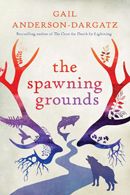
In August 2012 I read Anderson-Dargatz’s sweet story, A Recipe for Bees.
This new novel, The Spawning Grounds, by the two-time Giller-shortlisted author, is “an intimate family saga rooted in the Thompson-Shuswap region of British Columbia, and saturated with the history of the place. A bold new story that bridges Native and white cultures across a bend in a river where the salmon run.”
2. Alan Bradley
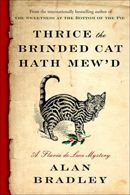
Bradley is the creator of Flavia deLuce, the intelligent, feisty, funny, and down-to-earth pre-teen budding chemist who solves mysteries in her village in rural England in the early 1950s.
I’ve read every book in this series, and I won’t be missing Thrice the Brinded Cat Hath Mew’d either.
3. George Elliott Clarke
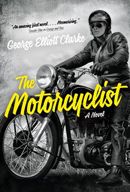
Back in my pre-blogging days I read both Execution Poems (poetry) and George & Rue (prose), accounts of Clarke’s mother’s cousins who were executed for killing a man in 1940s New Brunswick.
This new book, The Motorcyclist, was inspired by the life of Clarke’s father, set in and around Halifax, Nova Scotia. “In vibrant, energetic, sensual prose, George Elliott Clarke brilliantly illuminates the life of a young black man striving for pleasure, success and, most of all, respect.”
4. Emma Donaghue
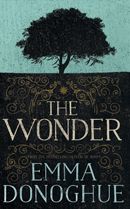 Who hasn’t read Donaghue’s great novel-turned-movie Room? The summer I read it, many of my friends were saying they couldn’t read it because they were afraid it would be too dark.
Who hasn’t read Donaghue’s great novel-turned-movie Room? The summer I read it, many of my friends were saying they couldn’t read it because they were afraid it would be too dark.
But, on the contrary, this is a book about the indomitability of the human spirit, the capacity to adapt, and the power of love.
Her new book, The Wonder, is about a village in 1850s Ireland where a little girl appears to be thriving after months without food. The story of this ‘wonder’ has reached fever pitch.
5. Joy Fielding
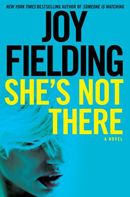
I’m amazed to see from my records that I’ve read four of Fielding’s books: Grand Avenue, The Other Woman, Lost, and See Jane Run, all in pre-blogging days.
Her 2016 entry, She’s Not There, is about a woman who, fifteen years after her infant daughter was kidnapped in Mexico, is contacted by a girl claiming to be her long-lost daughter.
6. John Irving
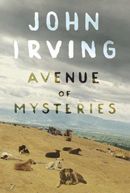
I’ve read five of John Irving’s novels over the years. Nearly all were set in New England so his 2016 offering Avenue of Mysteries sounds a little different.
“Avenue of Mysteries is the story of what happens to Juan Diego in the Philippines, where what happened to him in the past–in Mexico–collides with his future.”
Will wrestling or bears make their appearance?
7. Maureen Jennings
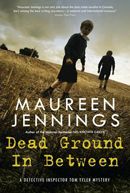 Jennings is probably best known as the author of the series featuring Detective Murdoch, set in nineteenth century Toronto, Ontario. The books are the basis for the popular television series The Murdoch Mysteries.
Jennings is probably best known as the author of the series featuring Detective Murdoch, set in nineteenth century Toronto, Ontario. The books are the basis for the popular television series The Murdoch Mysteries.
In addition to the first in that series, I’ve read Does Your Mother Know?, the first installment in Jennings’ Christine Morris series.
Dead Ground In Between is the fourth entry in her D.I. Tom Tyler series, set in WWII Britain. I haven’t sampled this series yet but it’s said to be a “must-read for fans of Foyle’s War, Jacqueline Winspear’s Maisie Dobbs series, and wartime dramas.”
8. Margot Livesey
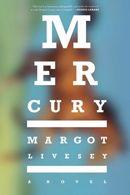
Hmmm . . . Scottish by birth, American by residence, Livesey must use a Canadian publisher, else why would she be on this list?
I’ve read The Flight of Gemma Hardy, a modern retelling of Jane Eyre.
Mercury is said to be “a taut emotional thriller about love, obsession and the secrets that pull a family apart.” Mercury is a horse.
9. Yann Martel
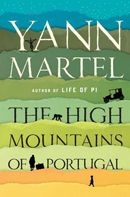
How does one follow up such a smashing success as Life of Pi, which I read in my pre-blogging days?
“The High Mountains of Portugal is a suspenseful, mesmerizing story of a great quest for meaning, told in three intersecting narratives touching the lives of three different people and their families, and taking us on an extraordinary journey through the last century.”
10. Stuart McLean
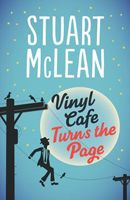
Most Canadians are familiar with Stuart McLean who is a regular voice on CBC Radio’s Vinyl Café. McLean is a superb storyteller, weaving magical tales about the everyday lives of Dave & Morley and their kids Stephanie & Sam.
But “Dave and Morley are growing older; Steph and Sam are growing up. Moving out and moving on. In this brand new collection of Vinyl Cafe stories, The Vinyl Cafe Turns the Page, the more things change, the more things stay the same.”
11. Donna Morrisey
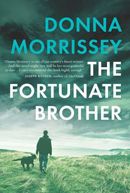
I love Donna Morrissey’s books and have read the first three: Kit’s Law, Downhill Chance, and Sylvanus Now, all before I started blogging.
That puts me a couple of books behind before I attend her book signing for The Fortunate Brother at the Fables Retreat in Tatamagouche on September 24th.
The Fortunate Brother continues the story of the Now family: Sylvanus & his wife and their children.
12. Kate Taylor

I thoroughly enjoyed Taylor’s second novel, A Man in Uniform, about the infamous Dreyfuss affair in late nineteenth century France.
I’m looking forward to reading this latest offering A Serial Monogamy, which features a woman writing “a serialized novel based on the story of the 19th-century actress Nelly Ternan, the young mistress of the aging Charles Dickens. (The) novel shifts between Sharon’s Toronto and Nelly’s Victorian England.”
13. Russell Wangersky
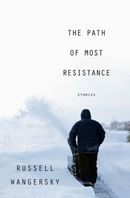
I first became aware of Wangersky when I heard him read at the 2014 Read by the Sea festival in River John, Nova Scotia. I promptly read his novel The Glass Harmonica, and the collection of short stores WhirlAway which was shortlisted for the 2012 Giller Prize.
The publicity for The Path of Most Resistance says it “is an observant and compassionate look at the feelings of powerlessness that we all share, and will have readers silently cringing and nodding in recognition of their own bad behaviour.”
14. Inger Ash Wolfe
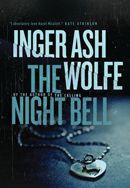
I read The Calling, first in the series introducing Hazel Micaleff, in charge of a provincial police detachment 3 hours north of Toronto, in 2012. I had trouble putting it down and rated it four stars which is high praise for me for a serial killer novel. It’s been made into a film starring Susan Sarandon.
The Night Bell, the fourth in the series, is said to be the author’s best yet. I think this is a series best read in order.
15. Richard B. Wright
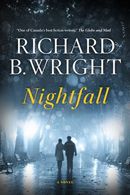
Of course I’ve read Wright’s masterpiece Clara Callan, which won three major Canadian literary awards, including the Giller Prize. I’ve also read October and Mr. Shakespeare’s Bastard, neither of which had any chance of living up to the beauty of Clara Callan.
In Wright’s new book, Nightfall, James Hillyer, a retired university professor tracks down the woman he fell in love with so many years ago on a summer trip to Quebec.
16. Alissa York
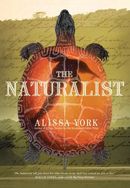
I’ve read York’s Fauna, which imagines a sanctuary for injured wildlife, hidden in the Don Valley in the middle of Toronto, Ontario, Canada’s largest city.
The Naturalist concerns an 1867 trip by amateurs up the Amazon River.
Isn’t this a gorgeous cover? You can find out what other covers in the list I thought worthy of note, on my “Cool Covers” Pinterest board.
* * * * *
I’d like to read most of the books on this list, but my MUST-READS: Wangersky, Morrissey and Bradley. How about you?


P.S. Although most links in this post will take you to my past reviews, any links that take you to Amazon or The Book Depository are affiliate links so I will receive a small percentage of any purchase you make after clicking through from this blog.
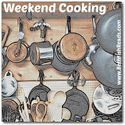
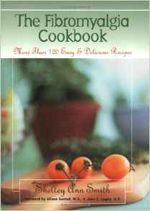
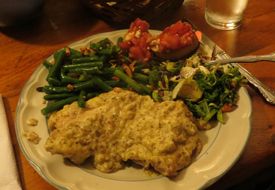 This dish was better than delicious. The chicken was moist and tender, and the sauce cheesy and creamy.
This dish was better than delicious. The chicken was moist and tender, and the sauce cheesy and creamy.
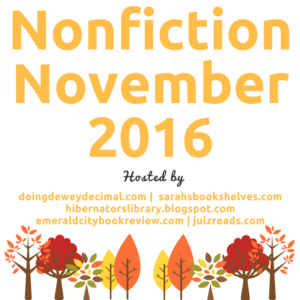
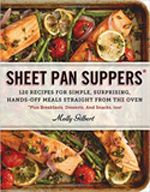 This week, we’re all looking back at our year of nonfiction, and for me, that’s pretty sad: my favourite NF books were cookbooks. In fact, the majority of nonfiction I perused this year was about food: cooking it (
This week, we’re all looking back at our year of nonfiction, and for me, that’s pretty sad: my favourite NF books were cookbooks. In fact, the majority of nonfiction I perused this year was about food: cooking it (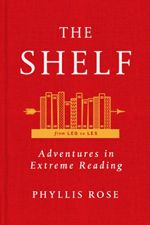
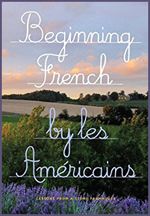
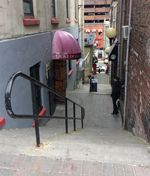 The second order was at the Duke of Duckworth, a downtown St. John’s institution of sorts. It hides on McMurdo’s Lane, a stairway that climbs the cliff between Water Street (below) and Duckworth Street. I’m afraid my attempt to photograph it doesn’t do it justice. Fans of CBC’s uber-popular
The second order was at the Duke of Duckworth, a downtown St. John’s institution of sorts. It hides on McMurdo’s Lane, a stairway that climbs the cliff between Water Street (below) and Duckworth Street. I’m afraid my attempt to photograph it doesn’t do it justice. Fans of CBC’s uber-popular 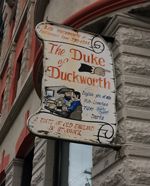
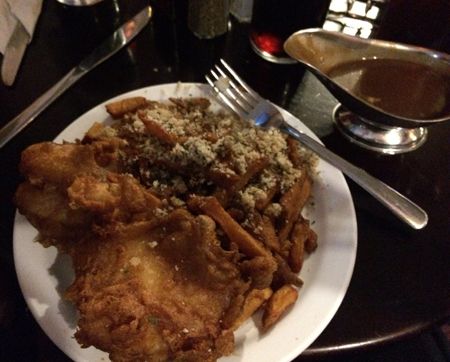


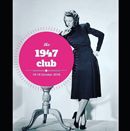 I have watched with interest as Simon at
I have watched with interest as Simon at 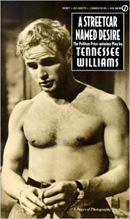 If you know A Streetcar Named Desire only from snatched clips or even just your friends’ impersonation of Brando’s “STELLL- AHHHHH!”, as I had, then you’ve missed the quality of this writing. But even if you can’t attend a live production of Streetcar, you can still access the beauty of this play in the written word – a slim 179-page volume that reads quickly and easily and, thanks to many school curricula, continues to be in print.
If you know A Streetcar Named Desire only from snatched clips or even just your friends’ impersonation of Brando’s “STELLL- AHHHHH!”, as I had, then you’ve missed the quality of this writing. But even if you can’t attend a live production of Streetcar, you can still access the beauty of this play in the written word – a slim 179-page volume that reads quickly and easily and, thanks to many school curricula, continues to be in print.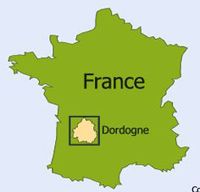
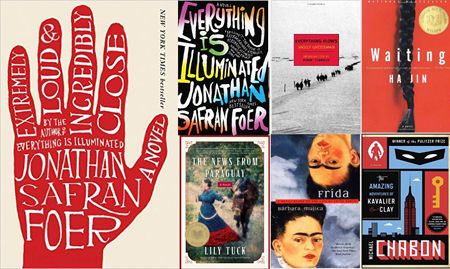
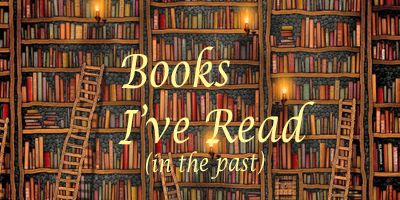
 Finally got around to reading this ‘classic’. Plath’s description of Esther’s descent into depression was so accurate a mirror of my own feelings, it was at once frightening and comforting. How far I could have fallen!
Finally got around to reading this ‘classic’. Plath’s description of Esther’s descent into depression was so accurate a mirror of my own feelings, it was at once frightening and comforting. How far I could have fallen!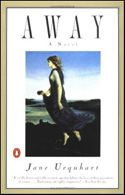 Recommended by my daughter. My first Urquhart. Set between Ireland and Canada in the mid-1800s. Thought-provoking and enjoyable. Made me want more specific history.
Recommended by my daughter. My first Urquhart. Set between Ireland and Canada in the mid-1800s. Thought-provoking and enjoyable. Made me want more specific history. [2016 notes: Amazon says “Here’s the story of how Truckbox Al McClintock, a small-town greaser whose claim to fame was hitting a baseball clean across the Pembina River, almost got a tryout with the genuine St. Louis Cardinals — but instead ended up batting against Bob Feller of Cleveland Indian Fame in Renfrew Park, Edmonton, Alberta.”
[2016 notes: Amazon says “Here’s the story of how Truckbox Al McClintock, a small-town greaser whose claim to fame was hitting a baseball clean across the Pembina River, almost got a tryout with the genuine St. Louis Cardinals — but instead ended up batting against Bob Feller of Cleveland Indian Fame in Renfrew Park, Edmonton, Alberta.”
 Heat oil in a large, high-sided skillet over medium-low heat. Add onions and cover. Cook, stirring occasionally, until onions are tender and beginning to turn golden, about 15 minutes.
Heat oil in a large, high-sided skillet over medium-low heat. Add onions and cover. Cook, stirring occasionally, until onions are tender and beginning to turn golden, about 15 minutes. 

 Next book up was
Next book up was 


 Who hasn’t read Donaghue’s great novel-turned-movie
Who hasn’t read Donaghue’s great novel-turned-movie 

 Jennings is probably best known as the author of the series featuring Detective Murdoch, set in nineteenth century Toronto, Ontario. The books are the basis for the popular television series
Jennings is probably best known as the author of the series featuring Detective Murdoch, set in nineteenth century Toronto, Ontario. The books are the basis for the popular television series 








 About four years ago, I read
About four years ago, I read 
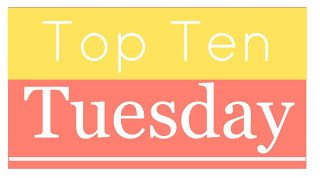
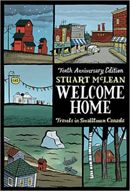
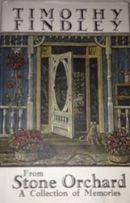 This non-fiction work was my introduction to this icon of Canadian literature.
This non-fiction work was my introduction to this icon of Canadian literature. 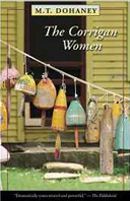 I love this cover: it represents so well the Atlantic Canadian life I’ve embraced.
I love this cover: it represents so well the Atlantic Canadian life I’ve embraced.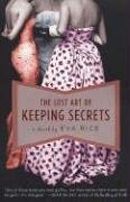
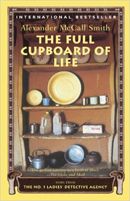

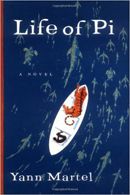
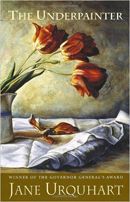
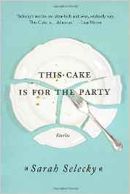
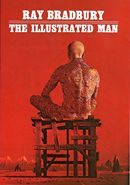
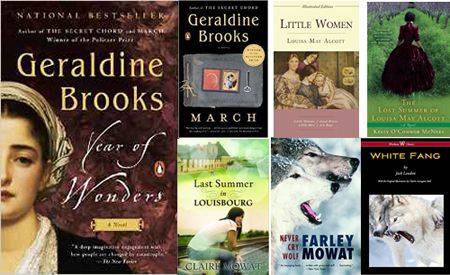
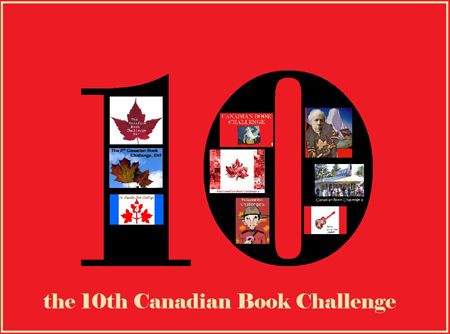
 dottle: the plug of tobacco residue or ashes left in the bottom of a pipe after it is smoked.
dottle: the plug of tobacco residue or ashes left in the bottom of a pipe after it is smoked.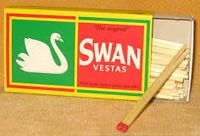 “He filled his pipe and struck one of the wax vestas.”
“He filled his pipe and struck one of the wax vestas.”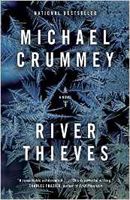 In Newfoundland in the early 1800s, explorer David Buchan wants to establish communication with the last of the Beothuks–the native peoples.
In Newfoundland in the early 1800s, explorer David Buchan wants to establish communication with the last of the Beothuks–the native peoples. Set in Newfoundland fishing villages c1940-1955, this is a heart-rending story of how war affects families and communities.
Set in Newfoundland fishing villages c1940-1955, this is a heart-rending story of how war affects families and communities.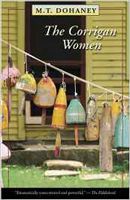 3. The Corrigan Women/To Scatter Stones/A Fit Month for Dying by M.T. Dohaney
3. The Corrigan Women/To Scatter Stones/A Fit Month for Dying by M.T. Dohaney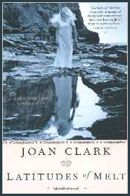
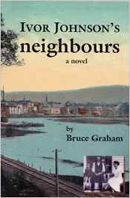
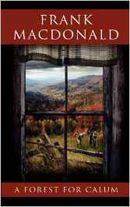
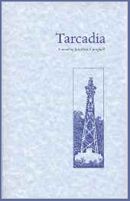
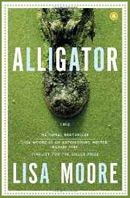 Set in modern day St. John’s, Newfoundland, this book tells its story through alternating chapters about Colleen, a seventeen-year-old would-be eco-terrorist, her mother Beverly, Beverly’s sister Madelaine, and Frank, a benevolent young man without a family.
Set in modern day St. John’s, Newfoundland, this book tells its story through alternating chapters about Colleen, a seventeen-year-old would-be eco-terrorist, her mother Beverly, Beverly’s sister Madelaine, and Frank, a benevolent young man without a family.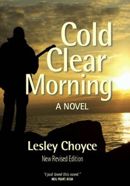
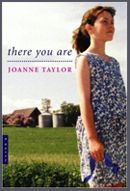 Twelve-year-old Jeannie Shaw lives in the Margaree Valley on Cape Breton Island, Nova Scotia in the 1950s. Amazon says: “Lonely and isolated in her small, post-World War II rural community, she longs for a friend, a longing that verges on obsession. When a new family moves in, her hopes are raised, then dashed, and a near tragedy yields unexpected results. Taylor has done a fabulous job of painting a vivid picture of life on Cape Breton Island.”
Twelve-year-old Jeannie Shaw lives in the Margaree Valley on Cape Breton Island, Nova Scotia in the 1950s. Amazon says: “Lonely and isolated in her small, post-World War II rural community, she longs for a friend, a longing that verges on obsession. When a new family moves in, her hopes are raised, then dashed, and a near tragedy yields unexpected results. Taylor has done a fabulous job of painting a vivid picture of life on Cape Breton Island.”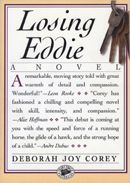
 Quire: a set of 24 or 25 sheets of paper of the same size and stock, the twentieth part of a ream.
Quire: a set of 24 or 25 sheets of paper of the same size and stock, the twentieth part of a ream. 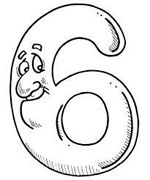 I’m joining in an annual link-up hosted by Jo at
I’m joining in an annual link-up hosted by Jo at